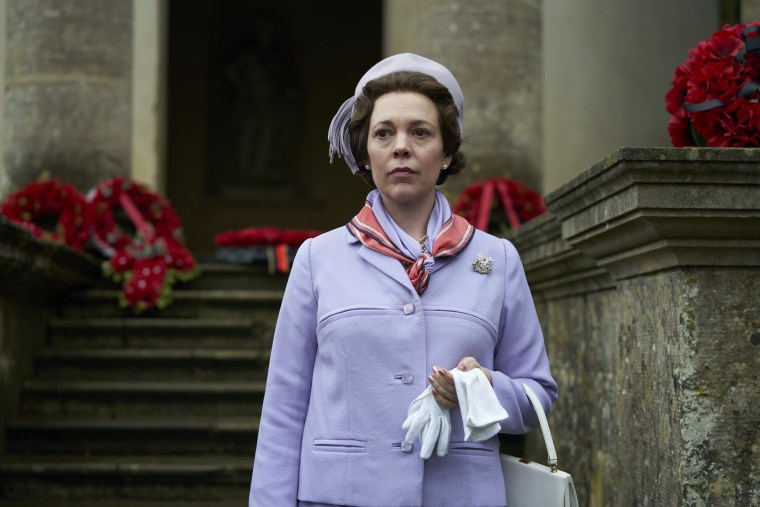After a year away, Netflix returns to Buckingham Palace with the third season of the award-winning series, “The Crown.” The good news is that the time away from the small screen has not changed the royal soap opera, which aims to become a sort of “first draft of history” by telling the story of the second Elizabethan era before it officially ends. The core storytelling remains the same in season three. But everything else, from the time period to the entire cast, has changed this season, with decidedly improved results.
The core storytelling remains the same in season three. But everything else, from the time period to the entire cast, has changed this season.
In 2014, a little more than a year into Netflix’s original programming foray, the streaming service announced it had greenlit “The Crown.” This was no ordinary series pickup. News quickly got out the streamer was planning six ten-episode seasons, spanning from 1947 through the 2000s, covering six decades of Queen Elizabeth’s reign. Even more shockingly ambitious: The series would not have one actress playing the monarch and slowly age her with makeup. Instead, the plan was to recast the entire show every two years, from the ground up.
Like what you see? Sign up for the THINK newsletter to get the week's most important cultural analysis
It was a wild proposition for a show of this type. It’s not unprecedented for a show to trade out the lead actors; “Doctor Who” has been doing it on and off for the last half a century. But these are almost always accidents of fate, not deliberately scheduled changeovers. Planned obsolescence might be the norm in Silicon Valley (Netflix’s hometown), but it’s not in the world of entertainment. For a show that arrived with overt ambitions to win Emmys, BAFTAs and Golden Globes, the idea of trading out the leads was unheard of.
But what’s truly astonishing is that, so far, the production is pulling it off.
Wave goodbye to Golden Globe-winning actress Claire Foy and say hello to Oscar-winning actress Olivia Colman in the role of Elizabeth. Matt Smith’s Prince Philip had magically aged into Tobias Menzies, while Vanessa Kirby’s Margaret has somehow morphed into Helena Bonham-Carter’s Margaret. In all three cases, these recastings are upgrades.
The most obvious improvement is Menzies as Philip. Smith was fine as Elizabeth’s forever frustrated consort, whose wife will spend almost their entire marriage outranking him. But within the first five minutes of being on screen, Menzies manages to make the now middle-aged Philip both far funnier and surprisingly sympathetic in his cringe-inducing privileged blindness. It’s an unlikely mixture that carries him throughout the series, climaxing in the fantastic “Moondust” episode.
Bonham-Carter gets two tour-de-force hours to herself as the always-second Princess Margaret. Hers is the most startling change aesthetically — she looks nothing like her predecessor Kirby. But Bonham-Carter’s stellar performance comes with a seal of authenticity, as Bonham-Carter’s uncle courted the real princess, and the actress has met Margaret socially. Some of what the show gives her is sadly historically nonsense, like her drinking and limerick contests with Clancy Brown’s President Lyndon Johnson. But the silver lining is the (ahistorical) script gives Bonham-Carter a chance to go all out, as does Margaret’s divorce, a shocking scandal at the time that previews how bad the collapse of Charles and Diana will be in the coming years.
Despite the strength of these supporting performances, the show never forgets this is Elizabeth’s story. The recasting from Foy to Colman has turned the queen’s blue eyes brown, but that’s the only open discrepancy here. In fact, Colman somehow has managed to nail the queen’s voice in the same way Foy did.
Despite the strength of these supporting performances, the show never forgets this is Elizabeth’s story.
But there’s a new, self-assured quality Colman brings to her version of the monarch that Foy never quite nailed. It helps that Colman has different foils. For the first time, the prime minister isn’t the one educating a young queen; instead, the queen is aiding an uncertain prime minister. (In Jason Watkins’ hands, Harold Wilson is also the most relatable PM so far.) Also, unlike the early seasons, Elizabeth is actually forced to face her growing children, and some of the resulting scenes, especially when she’s facing down Charles, are close to remarkable.
Speaking of Charles, he’s now grown up and played by Josh O’Connor, who manages to make the hangdog prince somehow sexy — in his own shambling disaster way. Princess Anne (Erin Doherty) is also an adult now, and the struggles of the next generation of royals begin to come into better focus. The show works hard to bank as much sympathy for Charles as it can ahead of Diana’s entrance next season, turning his affair with Camilla into a star-crossed lovers kind of story. The show is so concerned with making Charles seem sympathetic, in fact, that Elizabeth comes off like a heartless mother sometimes. (Though the series makes sure we understand that, despite what seems like cruelty, Elizabeth’s attempted lessons come from a place of experience.)
In the end, while the show may be looking ahead to a decade when King Charles sits on the throne, for now, it’s still Elizabeth’s reign. Whether stopping near-coups or watching her prime minister’s government collapse, she sails on. No matter who joins or departs the cast, this show always returns to its staid, indefatigable queen. May she and “The Crown” continue to keep calm and carry on.


